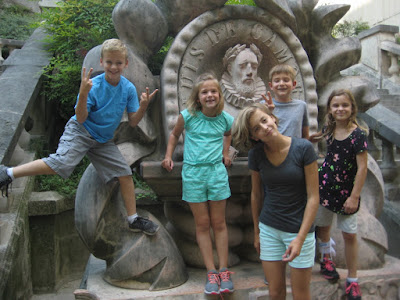Henry
Miller, the avant-garde, bohemian writer and activist said it best:
“If
at eighty you’re not a cripple or an invalid, if you have your health, if you
still enjoy a good walk, a good meal (with all the trimmings), if you can sleep
without first taking a pill, if birds and flowers, mountains and sea still
inspire you, you are a most fortunate individual and you should get down on
your knees morning and night and thank the good Lord for his savin’ and keepin’
power.”
Henry
Miller probably didn’t know at the time that he could have been talking about
the paradigm of growing older today when he made that statement back in the
sixties.
In
science and philosophy, a paradigm is a distinct set of concepts or thought
patterns, including theories, research methods, postulates, and standards for
what constitutes legitimate contributions to a field. And the fields are
endless.
Paradigms
are happening all around us and now at a faster pace than ever before. Even the
idea of the aging process has evolved. The old paradigm that defined the last
phase in a person’s life has changed how we look at old age.
Becoming
a senior isn’t what it used to be. The old ideas of retiring and waiting for
the inevitable are now a thing of the past for many older folks. It also means
they’re old enough to see the power of paradigms happening all around them…all
of the time, but especially now in the time of the pandemic.
Back
in the eighties, Joel Baker, a local author out of Burnsville, Minnesota made
quite a name for himself writing several books about the phenomena of paradigms.
I was reminded of that recently when I watched a fascinating documentary on
comic books.
Marvel
and DC Comics ruled the world of comic books for decades. Their stable of
cartoon characters hadn’t changed much over the years. It wasn’t until the
early 1990s, when radical change came knocking on their corporate doors. From
their talent pool arose a group of very unhappy artists who were chaffing at
the bit to create new action figures and colorful characters to match their
fertile imaginations. The group broke away from Marvel and DC Comics and formed
their own organization under the banner of Image books. They totally upended
the world of comic books.
Other
examples of shifting paradigms abound all around us:
In
the past, if a person wanted to stay overnight someplace, they had the choice
of hotels, motels, and resorts. The lodgings came in all shapes and sizes but
the premise was pretty much the same. They had rooms to rent; with or without amenities
and the competition was limited.
Then
two guys got this crazy idea that perhaps there were people who were willing to
rent their rooms out to perfect strangers and a whole new lodging industry
sprang up seemingly overnight. Now any world traveler can couch surf anyplace
on the planet and never step into a hotel ever again. Now Airbnb, VRBO, and
other facsimiles crowd the short-term lodging market.
Then
there was Yellow cab, Super Shuttle and local, regional, and national cab
companies that dominated the shuttle business. They had the market sewn up
since the advent of the automobile. Once again, a couple of folks thought that
private transportation might be an attractive alternative to the fixed high
rates charged by most cab companies and shuttle services. Hence, Uber and Lyft
came about and changed the industry forever.
At
one time, there were six major publishing houses; each with many smaller
imprints for specialized subject matter. Many of these publishing titans had
been around for more than a hundred years. Their business model hadn’t changed
since the mid-to-late-1800s.
Those
six houses have now shrunk to three or four with more consolidation taking
place every day. Electronic publishing and the new world of Print-on-Demand has
turned the old publishing model on its head. Minimum print runs are a thing of
the past and the internet has broadened the marketplace to include the entire planet.
Broadcast
television made its debut in the United States in the late 1940s and gained a
strong foothold in American consciousness in the early 1950s. That broadcast
model/formula remained stable until the advent of cable television in the
mid-1980s. Then, just as television had usurped much of the power of the
movies, cable television disrupted the power of the major networks.
From
there it was off to the races with the advent of DVDs and home entertainment
crowding into the movie/ television business. CDs replaced LPs. Eventually
computer technology allowed streaming content on multiple platforms to replace
much of the DVD business model and the broadcast influence of the networks and
cable channels.
The
examples of paradigms disrupting the ‘tried and true’ procedures and processes continue
at an ever-quickening pace. It’ll be up to my children and grandchildren to
embrace and adjust to the changes swirling around us. For me, it’s an excuse to
reflect, smile, and mostly watch from the sidelines. On a more personal level,
it means the old adage that I grew up with of ‘retire and wait to die’ has now
been replaced by ‘retire and now what?’
Following
Henry Miller’s advice, I’d like to reach my eighties in good shape and still writing.
It’s been one heck of a wonderful run thus far. I can only imagine what is in
store for my grandchildren as they maneuver their way through life in the
future. I’d like to stick around for a while to watch them do just that.




















































